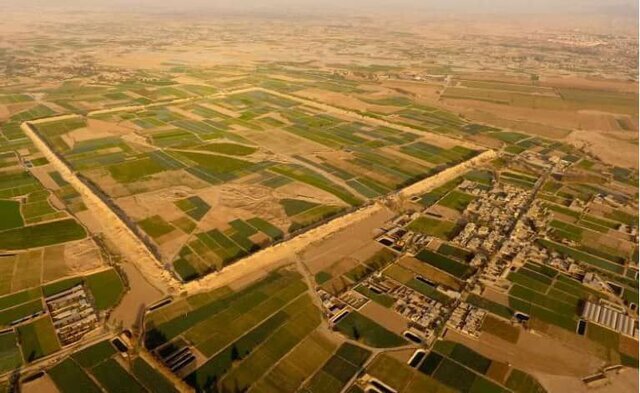Expert seeks UNESCO status for Iraj fortress, calls it remarkable phenomenon of Persian architecture

TEHRAN – A cultural heritage expert has proposed the nomination of the Iraj fortress for possible inclusion in UNESCO’s cultural heritage register.
On Tuesday, Qadir Afround, the director of Shahr-e Rey’s national cultural heritage base, said the ancient fortress is a remarkable phenomenon in the history of Iranian architecture, and it has enormous potential to become a UNESCO World Heritage site.
Speaking to ISNA about the necessity of the world registration for this ancient fortress, Afround stated: “This adobe fortress, spanning approximately 1.5 Km by 1.280 km, is undoubtedly a remarkable phenomenon of Iran’s historical architecture, identified by archaeologists as a military base for Iranian soldiers during the Sassanian era.”
“This unparalleled adobe architectural masterpiece has astonishing dimensions and measurements; its area is approximately 200 hectares, with a length of about 1.5 kilometers and a width of around 1.3 kilometers. The wall and rampart’s diameter exceeds 20 meters, comprising four gates in the four main directions.
“The fortress, which is registered on the national heritage list, contains 146 towers spaced every 30 meters, along with over 800 rooms on both sides of corridors or servant quarters, constructed with a height of over 6 meters, surrounded by a massive moat spanning several meters wide.”
Afround continued: “We are planning to focus on inviting and engaging archaeological expeditions to continue the research and seasonal excavations at ‘Iraj Castle’ for the second phase of conservation and restoration, concentrating on the southern gate.”
The expert stated that among the most critical objectives of the national site are determining the ownership rights, resolving illegal encroachments and occupations, and providing substantial and serious protection for this ancient adobe fortress.
The effective effort will reopen the doors to tourists to benefit local communities from the blessings of cultural tourism’s economic prosperity, he said.
“Moreover, it will attract investors’ attention to this extraordinary tourism capacity, eventually witnessing significant developments and transformations in the region.”
The director of Ray’s National Heritage Site concluded: “One of our primary goals is strategic planning for the global registration of this adobe fortress, and I have no doubt that if the people, as the rightful owners and custodians of this magnificent monument, along with intellectuals, cultural and social activists, and national and local government officials contribute and support, ‘Iraj Castle’ will be among the top priorities for registration in Iran and the world heritage list.”
Famed as Qale Gabri by the locals, the ruined monument is one of the various castles and fortresses that can be found near the gates of the old city of Rey, now in southeast Tehran. Gabri stands in the Varamin plain of Rey and others are located in Kasni, Deh Khiz, Tappeh Begam, and Moqim Abad.
The history of settlement in Rey dates from the 3rd millennium BC. It is featured in the Avesta (the original document of Zoroastrianism, an Iranian religion) as a sacred place, and it is also mentioned in the book of Tobit, of the biblical Apocrypha, and by classical authors.
According to Encyclopedia Britannica, Rey was one of the capital cities of the Parthian empire (3rd century BC–3rd century CE). It was captured by the Muslim Arabs in 641 CE. During the reign of the Muslim caliph al-Mahdi in the 8th century, the city grew in importance until it was rivaled in Western Asia only by Damascus and Baghdad. Islamic writers described it as a city of extraordinary beauty, built largely of fired brick and brilliantly ornamented with blue faience (glazed earthenware). It continued to be an important city and was briefly a capital under the rule of the Seljuqs, but in the 12th century, it was weakened by the fierce quarrels of rival religious sects. In 1220, the city was almost destroyed by the Mongols, and its inhabitants were massacred. Most of the survivors of the massacre moved to nearby Tehran, and the deserted remnants of Rey soon fell into complete ruin.
Rey, however, retains enough history to give it a different sensibility. Its key sight is the elaborately decorated Shah Abdol Azim Shrine. Beside the shrine complex is a lively bazaar, while further afield are a couple of minor historical attractions.
AFM
Leave a Comment